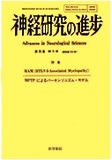Japanese
English
- 有料閲覧
- Abstract 文献概要
- 1ページ目 Look Inside
I.はじめに
1980年代はヒトのレトロウイルスにとって画期的な年代となった。長い間,白血病患者の組織や血液細胞から白血病ウイルスの検出の試みがなされてきたが,ついに1980年にPoieszら24)により,1981年にHinumaら6)により,adult T-cell leukemia(ATL)よりヒトのレトロウイルスであるhuman T-lymphotropic virus(HTLV)I型が発見され,1984年にYoshidaら31)によりこのウイルスがATLの原因ウイルスであることが明らかにされた。また,一方では1981年の米国のCenters for Disease Controlの報告に端を発してacquired immunodeficiency syndrome(AIDS)4)が人類に挑戦する勢いで蔓延しつつあり,その原因ウイルスもヒトのレトロウイルスHTLV-III2,25)であることが明らかにされた。この二つのウイルスはヒトのレトロウイルスである点,致死的な白血病や免疫不全症候群をひき起こす点,それにヒトTリンパ球(とくにCD4陽性細胞)に感染する点で共通しており注目を浴びている。
これらの新たなヒトレトロウイルスの発見の中にあって,従来より原因不明の神経変性疾患と考えられていた慢性進行性の痙性脊髄症の病因にHTLV-Iが関わっている報告がなされた3,22)。
Human T lymphotropic virus (HTLV)-I is a causative retrovirus of the adult T cell leukemia (ATL). Recently, a new clinical entity of HTLV-I associated myelopathy (HAM) was proposed. This disease is characterised clinically by a chronic, progressive spastic paraparesis, and serologically by a high antibody titer to HTLV-I in the sera and CSF. However, the role of HTLV-I on the pathogenesis of this disease is unknown.
In this article, we review neurological and neuropathological features and lymphocyte abnormalities in ATL as well as in the acquired immunodeficiency syndrome (AIDS) which is also caused by a human retrovirus, human immunodeficiency virus (HIV), in comparison with HAM. In AIDS patients who are suffered from severe immunodeficiency, a progressive dementia is a cardinal neurological symptom and sign, which is not related to opportunistic infections in CNS. In ATL, CD 4+ leukemic cells infiltrate into the meninges and CNS parenchyma, and result in various neurological symptoms and signs. Although there were a few immunological studies on HAM, our study on the peripheral blood lymphocyte subset showed a decrease in CD 8+ cells, and an increase in OKDR+ cells, IL-2R+ cells and CD 4/CD 8 ratio in HAM patients. These data suggest that activated T cells are increased in HAM.

Copyright © 1987, Igaku-Shoin Ltd. All rights reserved.


